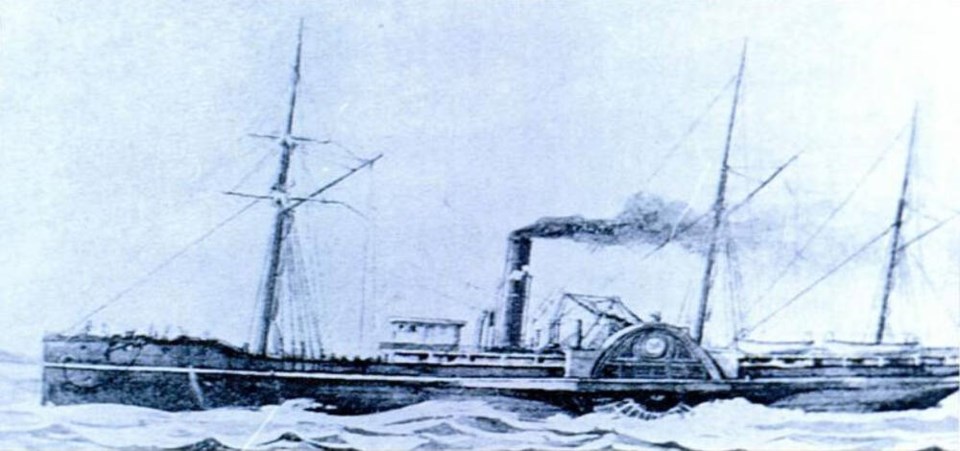The U.S. company that discovered the site of the Pacific Northwest’s deadliest maritime disaster has heard from a number of British Columbians claiming to be descendants of the ship’s passengers, says the man who found the vessel.
On Monday, Rockfish Inc. president Jeff Hummel told Postmedia News that those people had contacted his company since word got out that it had secured salvage rights to the Pacific — a coal-powered sidewheeler that sank off the tip of the Olympic Peninsula on Nov. 4, 1875 with the loss of at least 350 lives.
The ship was travelling from Victoria to San Francisco and was reported to be carrying around 4,000 ounces of gold from the short-lived but very rich Cassiar Gold Rush in northwest sa国际传媒
Much of the gold was in bullion form and in small bags carried by the miners who were returning home to the U.S. before the sa国际传媒 winter set in. On board was at least one locked iron and wood container that belonged to the Wells Fargo and was loaded with gold.
As part of the salvage rights granted by the court in late November, anyone who can prove that they were related to a person who was on the ship can make a claim to whatever valuables — in this case likely gold — they had on them or had stored on the ship for them.
Hummel said that people from the U.S. and sa国际传媒 had contacted his company claiming their relatives were aboard and had gold.
However, none of those people have made their claim in court, which they must do by the end of January.
“None of it is a matter of record yet,” Hummel said, adding the court must determine the truth of any claim.
He said also that courts have ruled in the past that if a person is successful in claiming valuables from a wreck, then they are only entitled to eight per cent of its worth. The remaining 92 per cent goes to the salvage company to pay for the salvage efforts.
According to historical records, there were around 100 people on the ship who were permanent residents of Victoria, including Sewell Moody who founded Moodyville as the first settlement in North Vancouver.
In 1873, the first year of the Cassiar Gold Rush, miners were pulling in $200 a day worth of gold when the average monthly wage was $25, so the wealth of many of those on-board the ill-fated ship was staggering.
Hummel said he expects artifact recovery work to begin next summer and extend into the summers of 2024 and 2025.
>>> To comment on this article, write a letter to the editor: [email protected]

